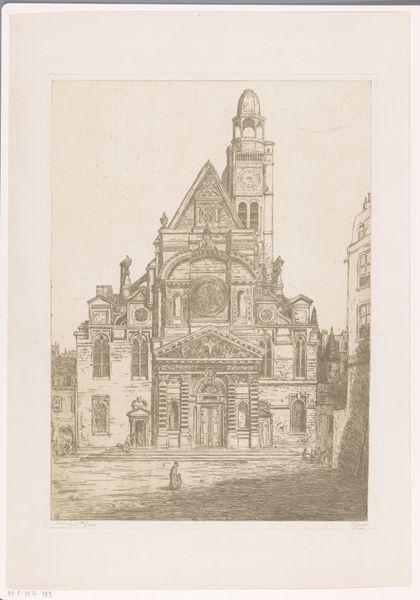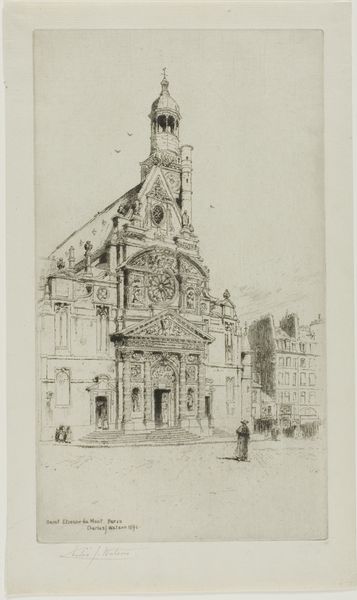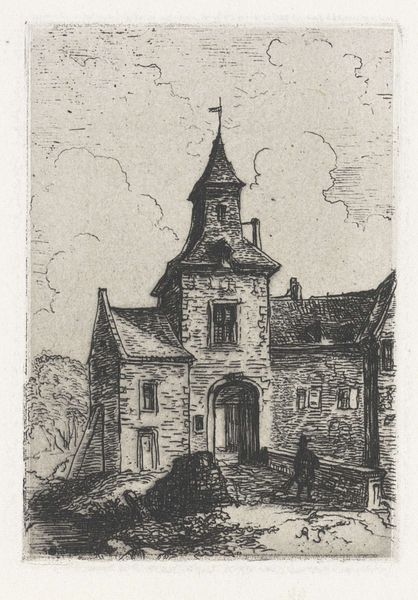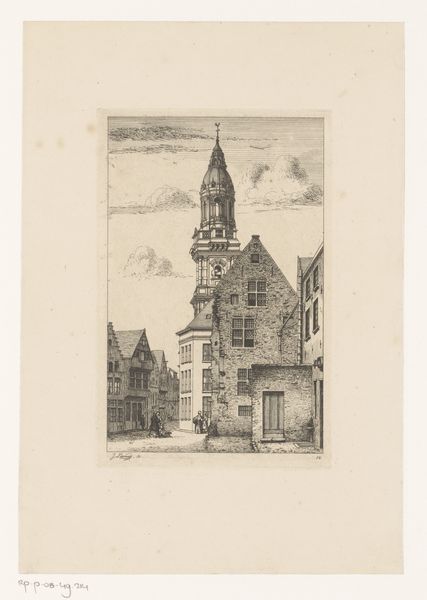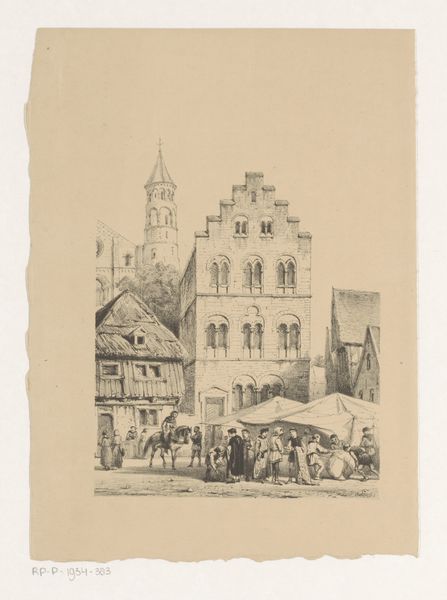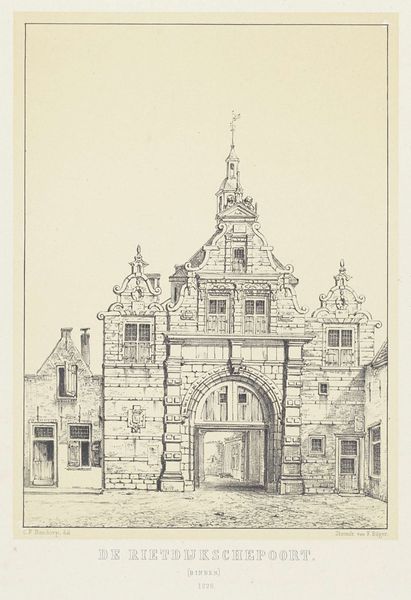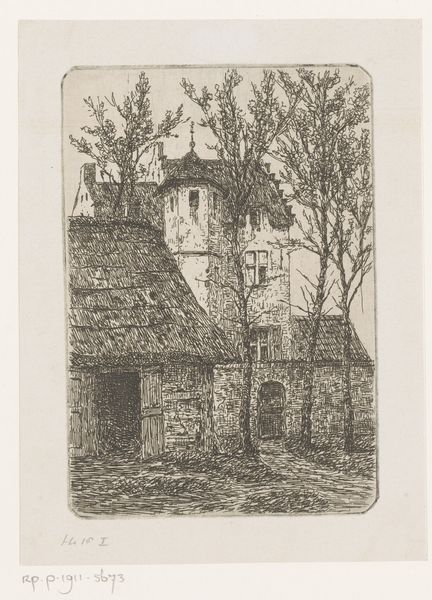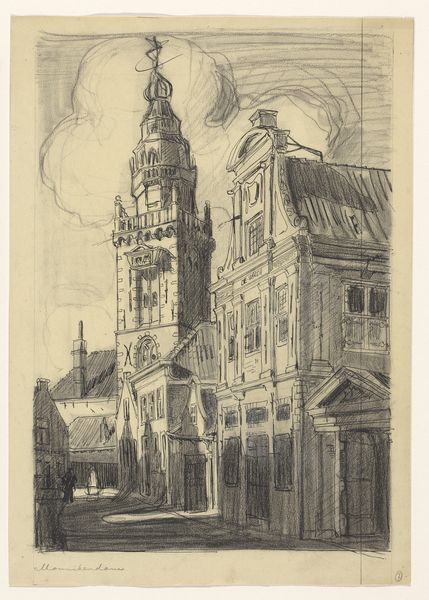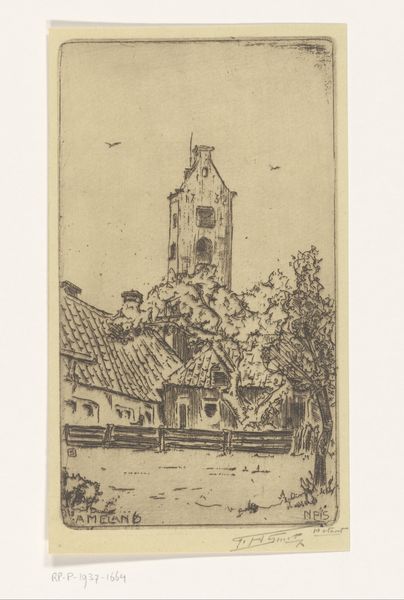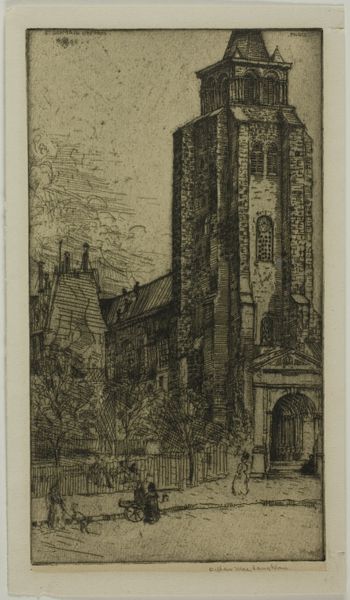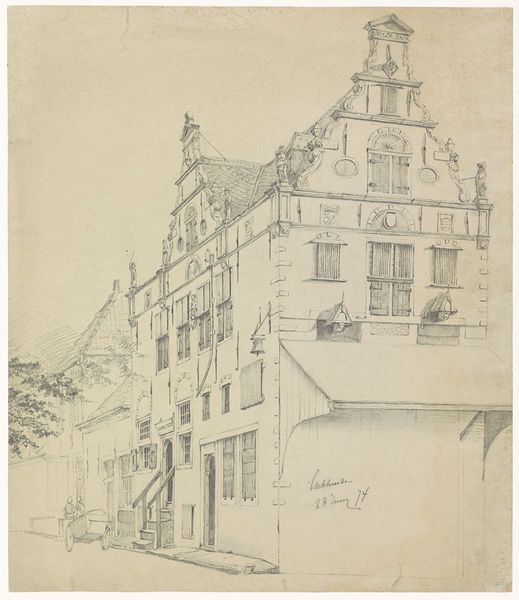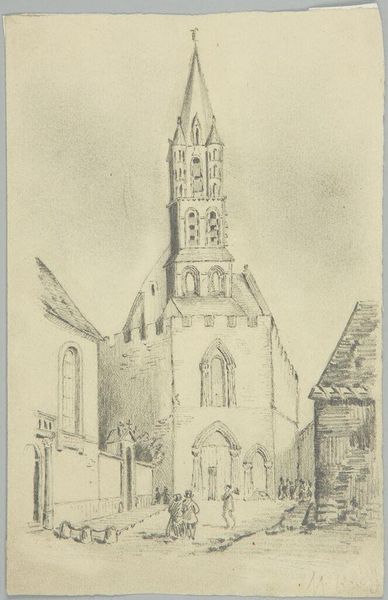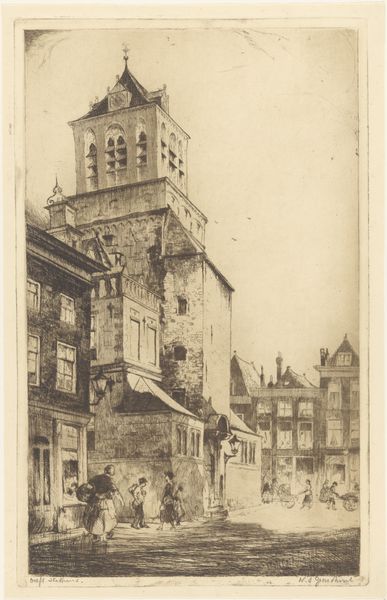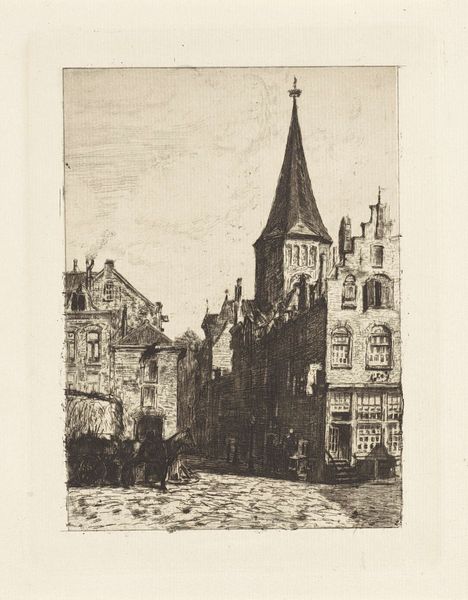
print, etching, engraving, architecture
# print
#
etching
#
landscape
#
pencil drawing
#
engraving
#
architecture
Dimensions: plate: 7.62 x 4.45 cm (3 x 1 3/4 in.) sheet: 22.86 x 14.61 cm (9 x 5 3/4 in.)
Copyright: National Gallery of Art: CC0 1.0
Editor: We’re looking at John Taylor Arms’s "Church of Saint Jean, Laigle, Orne" from 1940. It's an etching, and I’m immediately drawn to the incredible detail in the architecture. What stands out to you in this print? Curator: The medium is indeed central. Arms was celebrated for his technical skill. Look at the marks – how he meticulously layers them to evoke not only the texture of stone and wood but also the atmosphere, the play of light and shadow on the facade. Do you consider the historical context when viewing it? Editor: I hadn't considered it directly, but I can see how its creation in 1940 during World War II could be significant. Did that historical context influence his artistic choices, the materials available, perhaps? Curator: Absolutely. Consider the labour involved in such detailed work during wartime. Copper was a strategic material. Was Arms diverting resources to produce this, or was it a deliberate act of preservation, documenting cultural heritage under threat? Furthermore, the printing process itself, the physical act of creating multiples – does that suggest a desire for wider dissemination, a democratizing impulse in the face of potential loss? Editor: That makes me rethink the piece entirely. It’s not just a beautiful building; it’s a record, a statement even, about the enduring value of culture amidst conflict. Were prints common during this era because other art supplies were scarce? Curator: Prints offered a means of artistic expression when other materials might have been rationed or unavailable. The accessibility of the final product is a commentary on consumption during such hardship. Consider the work involved to make paper and ink during that era, versus paint. Editor: I see! I’ve always focused on the image itself, but understanding the limitations and possibilities presented by the materials and the process really changes my understanding. Curator: Exactly. Thinking about art materially and as the result of a series of labor and production-oriented choices offers new insight.
Comments
No comments
Be the first to comment and join the conversation on the ultimate creative platform.
